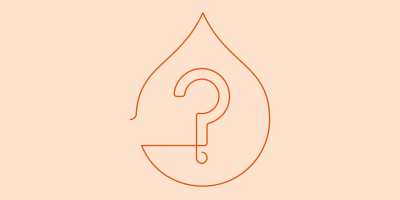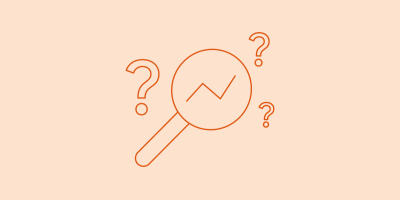
Collection
What’s the Difference Between a CDP and Data Lake?

Collection :
How organizations store, use, and manage customer data has swiftly become one of the foremost factors influencing modern digital experiences. As technology progresses and digital media expands, customer data flows into organizations at rates that were unimaginable not that long ago. This data influx has forced companies to keep customer data front of mind — for enterprise and customer alike.
At the same time, modern customers are smarter and more technologically savvy than ever. They’re looking more carefully at how organizations treat their data.
I don’t blame them. There have been more than a few massive data disasters at companies celebrated as models of technical excellence and progress. The breaches and leaks of personally identifiable data (PII) — and the growing number of data protections worldwide — have caused organizations to look at the technologies that may help them manage and secure the data they collect and steward.
Both customer data platforms (CDPs) and data lakes make for excellent data management tools, yet there are key differences that might impact if or how you’d use them. One thing is certain: Your customer data needs something for storage, analysis, and governance.
What are customer data platforms and data lakes?
You don’t have to pick one or the other technology. CDPs and data lakes serve distinct purposes that may match your organization in different ways. Let’s start by defining each.
A customer data platform is software that collects and unifies data across channels and systems to create a single source of truth for customer data. It pulls together zero-, first-, and third-party data to build comprehensive 360º customer profiles and update them in real time.
A data lake is a centralized repository to store, process, and secure structured, semistructured, and unstructured data in native formats without processing or size limits.
The difference between CDPs and data lakes
A clear difference between CDPs and data lakes is the types of data each platform works with. Specifically, a data lake can ingest data in any form but is limited by its processing — basically, raw data requires time and effort to clean, maintain, and organize before it’s useful.
CDPs, on the other hand, don’t ingest all forms of data but are built to clean data that comes in and to organize it into something manageable for a variety of teams across an organization. A data lake can get there but often requires a data science or engineering team to make the data useful for business intelligence.
Let’s look more closely at other differences.
Customer data platforms
CDPs primarily work with first-party data or data collected directly from users by your company, which lends more control over how you can use, label, and strategize with the data. CDPs have three main functionalities:
- Single customer view. Integrate, cleanse, standardize, deduplicate, and house customer data in a single source across online and offline channels to create a fully rounded customer view. We like to call this a 360° customer view.
- Customer analytics and machine learning. Predictive analytics can help recognize data patterns and reduce complexity and noise, amplifying marketing intelligence. Some CDPs even include machine learning models that can analyze all sorts of different trends depending on your goals.
- Plays nicely with other systems. Through APIs, CDPs serve as customer data’s intelligent backbone to ensure customer behavior — online or offline — is available in the system to influence changes in communication and customer experience.
CDPs are crucial for providing insights that are foundational for crafting better digital experiences, especially as modern customers grow more accustomed to hyper-personalization.
Organizations with advanced customer data capabilities earn more by creating the personalized digital experiences that customers have come to expect. Forrester reported a 589% ROI over three years when looking at Acquia CDP, for example. CDPs empower enterprises to adapt to changing behaviors to acquire more customers, reduce churn, optimize digital experiences, increase conversions, and elevate customer lifetime value.
When marketers have the chance to work with a 360° view of their customers based on data from all relevant sources, their organizations have an edge. Advantages include:
- Improved customer acquisition
- Decreased customer churn
- Reduced total cost of technology ownership
- Optimized customer experience
- Increased engagement and conversion
- Enhanced customer lifetime value
We know the marketing technology landscape is crowded — and getting more so daily. With customer data solutions proliferating, there’s certainly overlap, but it’s the differences that illuminate where one solution might work better than another.
That’s exactly the case with data lakes. What’s the story there?
Data lakes
Beyond the definition provided earlier, data lakes differ from CDPs in a few ways.
- Stores all data, period. We mean all of it. Structured, unstructured, and semistructured data can all be ingested by a data lake. It offers a central location for raw data from anywhere — think financial statements, inventories, social media interactions, etc. While a CDP works mostly with first-party data, data lakes consume and store it all.
- Limitless analysis limited by your bandwidth. Although a central repository for all your raw data is convenient, it’s not worth much if that data remains unused. Because a data lake works with raw data of various types, it’s up to your organization to do the manual labor of making that data useful. The task requires dedicated personnel — data scientists, engineers, etc. — so the detail and level at which you can use those insights is limited by how much that team can sift through, clean, organize, and analyze. (If your organization has such a team at all.)
- Integration difficulties. Data lakes aren’t traditionally built to integrate with a lot of marketing technology stacks. While analytical flexibility is central to data lakes, cross-functional integration is not.
Data lakes are exceedingly powerful when combined with a battalion of engineers and data scientists. Organizations have floundered using data lakes, because they’ve been unprepared for the sheer amount of data and didn’t have the human resources to organize their data lakes.
And because so much data in so many forms is flowing into data lakes, it doesn’t take long for disorganization to turn what was once a helpful data solution into a data swamp that gets more and more boggy over time.
What’s right for your organization?
Ultimately, your organization's data is in your hands. Examine your goals to see which customer data solution will get you to your customer data nirvana. What resources are at your disposal? What systems need to communicate? What kind of data are you looking to collect? No matter your answer, you can’t afford to ignore customer-data organization.
For quick, actionable customer data collection and analysis consolidated into a single-customer view and easily integrated across departments and platforms, a CDP is your best bet. We’d love to guide your customer data journey and are happy to show you how a CDP could work wonders for your organization. Get in touch!



